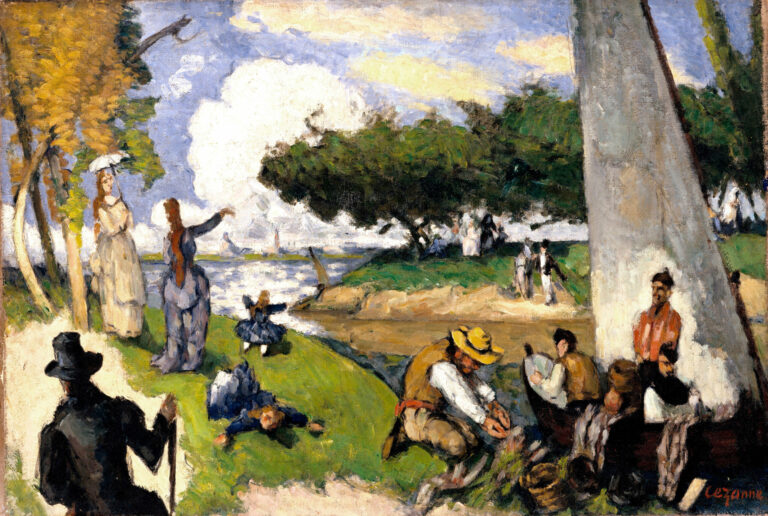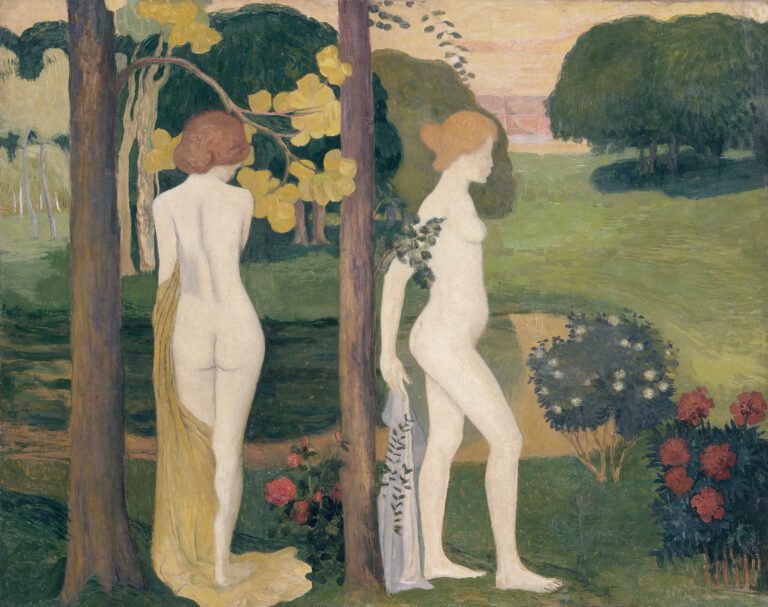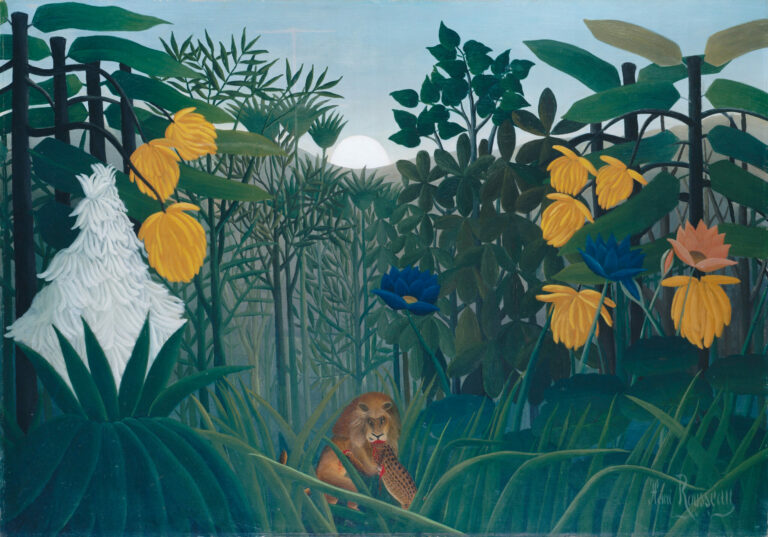
Brittany, summer 1888. Gauguin sets up his easel in the countryside. A young swineherd watches over his animals. Here, the painter seeks a primitive truth, far from the Parisian tumult.
A Bold Post-Impressionist Palette
Observe the brilliant yellows of the pigs in the foreground, almost unreal in their chromatic intensity. Gauguin simplifies forms, flattens space, rejects academic naturalism. The ochre and green hills are arranged in colored flat areas. Rocks punctuate the composition with light, rhythmic touches. The swineherd creates a contrast with the landscape. The brushwork is thick, applied in zones of color. The Breton village appears with its roofs and church steeple, anchoring the scene in a precise geography. This technique heralds the Synthetism that Gauguin would fully develop.
Between Tradition and Pictorial Revolution
This style marks a turning point in modern art. Gauguin rejects Impressionism, which he considers too descriptive. He invents a new language. Brittany offers what he seeks: a rural society, traditional costumes, a spirituality still alive. This pastoral landscape becomes an aesthetic manifesto. Gauguin asserts that color must express emotion, not reproduce visible reality. This revolutionary approach would influence the Nabis and the Fauves.
Paul Gauguin, Pioneer of Modern Art
A former stockbroker who became a painter at thirty-five, Paul Gauguin (1848-1903) transformed Western painting. He sought authenticity in traditional cultures, from Brittany to Polynesia. His work paved the way for twentieth-century Expressionism and Primitivism.
Think about it
💭 Why do we feel this need to reconnect with roots, with land, with a life that seems truer to us?
About This Work
- The Swineherd, Paul Gauguin, 1888, Los Angeles County Museum of Art (LACMA)
- Oil on canvas, 73 × 93 cm
- Los Angeles County Museum of Art (LACMA), Gift of Lucille Ellis Simon and her family in honor of the museum’s twenty-fifth anniversary (M.91.256)
- https://collections.lacma.org/node/172861






